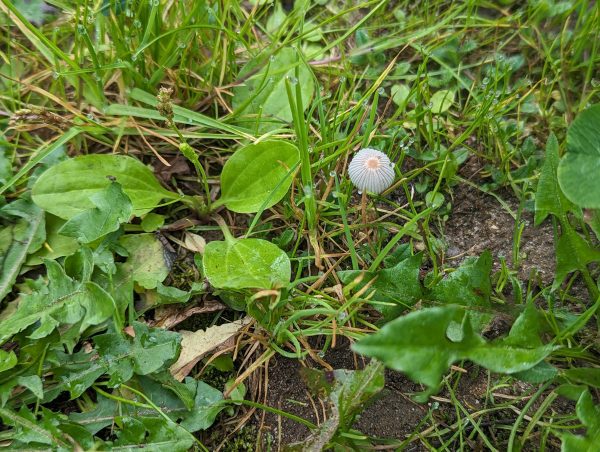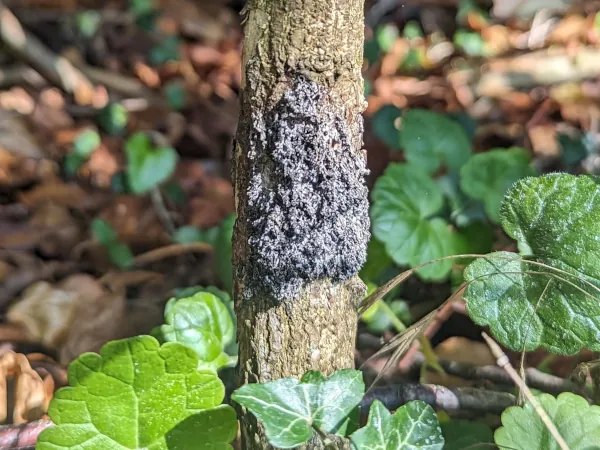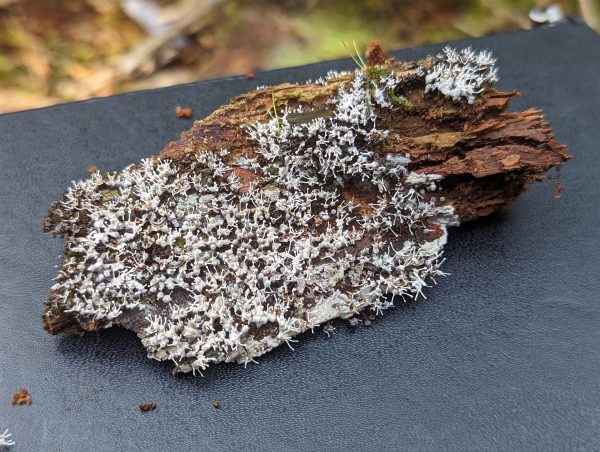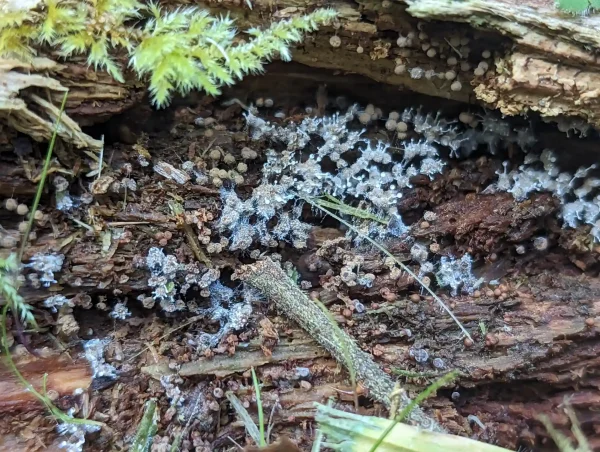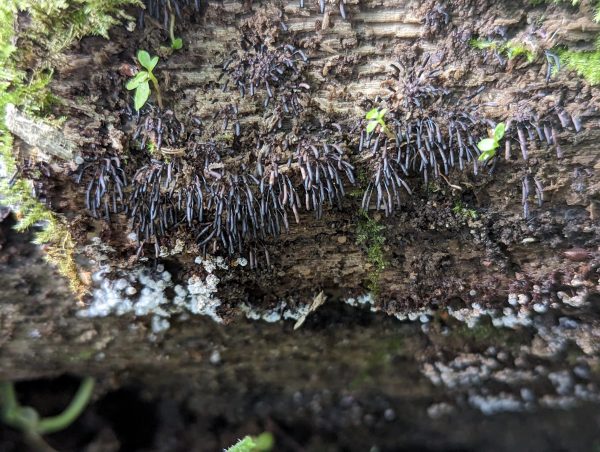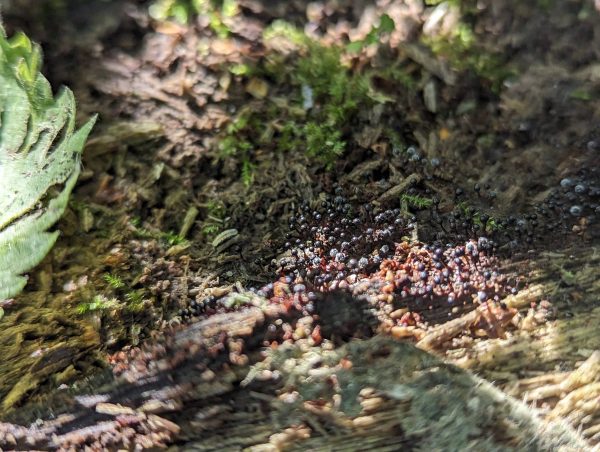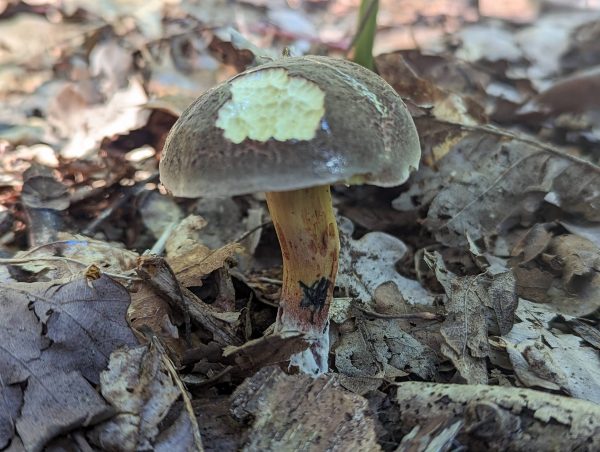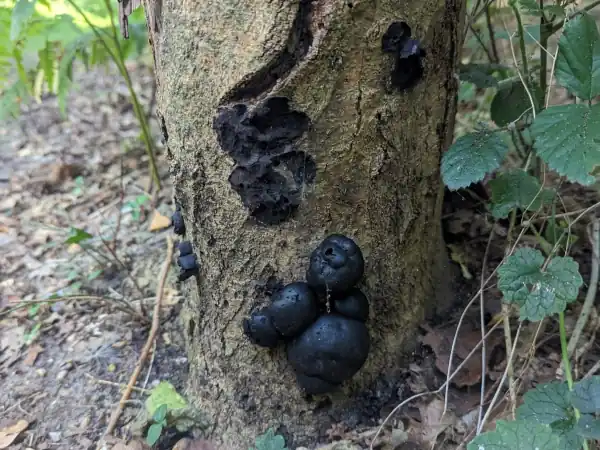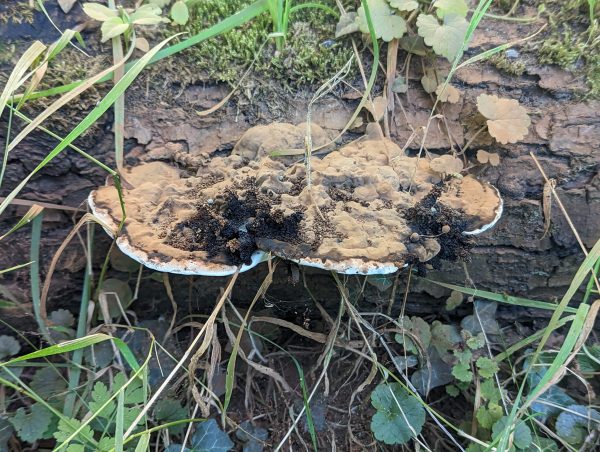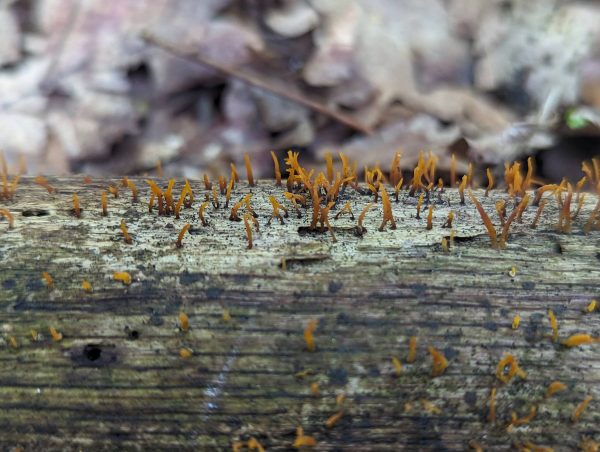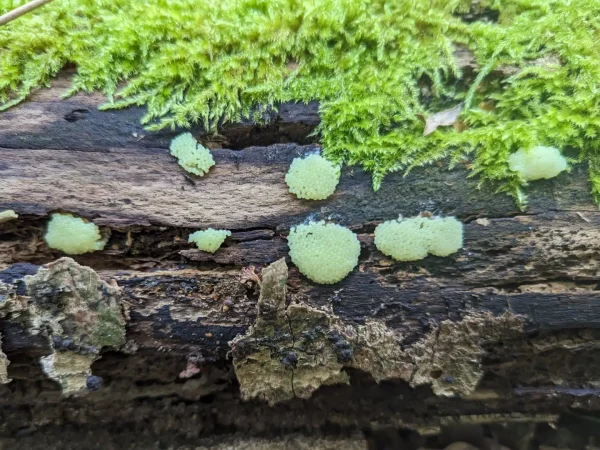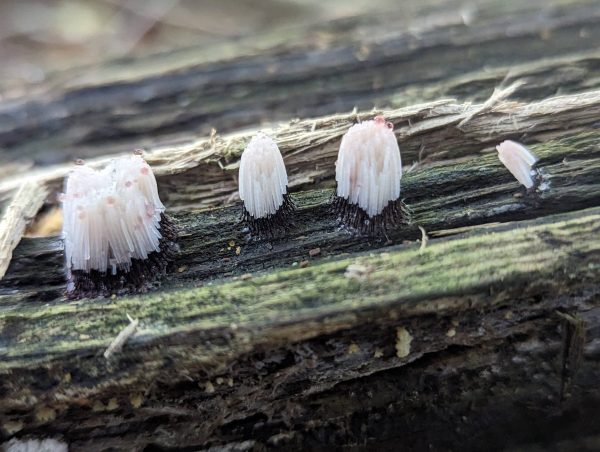Day 4
– 26 August 2023
Click on an image to see the fungus entry page
Today was cool and damp.
ENTRANCE AREA
In the main car park I found a Parasola plicatilis (Fig. 4.0).
At the Entrance Yard, the spore mass of the Mucilago crustacea (Fig. 4.1) had persisted for over a year in the same form.
BASECAMP AREA
At the start of the Basecamp Loop, the Peziza group from Day 1 had reappeared.
I also investigated a new, mossy log pile in the Basecamp Loop — on it was a group of an unidentified slime mould which I have now identified as the slime mould Cribraria argillacea (Fig. 4.2), parasitized by the fungus Stilbella byssiseda (Fig. 4.3)
By the path down to Basecamp, I saw the Fuligo cinerea from previous weeks, some Stemonitis (Fig. 4.4) and two groups of another slime mould (Fig. 4.5) — probably a Metatrichia species.
THE DELL
The Hemitrichia clavata in the Dell had not changed much.
SANDY GLADE AREA
On the way out The Dell, I spotted a Xerocomellus cisalpinus (Fig. 4.6) in the leaf litter and further along on an ash tree, some Daldinia concentrica (Fig. 4.7).
The Hemitrichia clavata from Day 1 here had not changed much either.
Just past the Gnarly Oak on the Fen Trail, on the left, I found a few fruitbodies of Ganoderma applanatum (Fig. 4.8).
YEW GROVE AREA
Just before the Yew Grove, I spotted a large group of Coprinellus disseminatus (Fig. 4.9) at the base of a tree.
The Chlorociboria and Laccaria bicolour troop were still there.
OUPOST AREA
Approaching The Outpost, I spotted a log covered in Calocera cornea (Fig. 4.10) and at the path behind The Outpost, I saw the Fuligo cinerea and Fuligo septica from last week, and a Lycogala epidendrum aethalium (Fig. 4.11) on a piece of blue stained wood.
TRAIL END AREA
The Stemonitis from day three had turned darker and the Fuligo septica in the same log pile had moved along in a newer, brighter patch.
I found a group of juvenile Arcyria cinerea with those from Day 1, Stemonitis flavogenita at the beginning of sporulation (Fig. 4.12), a group of a white Stemonitis (Fig. 4.13).
Further on, I found the juvenile Amanita rubescens from last week had grown.
OTHER
As before, the Scleroderma citrinum covered most of the ground after The Outpost and Ceratiomyxa fruticulosa covered much of the rotting wood.
The Hydnum Repandum had fallen over, revealing its teeth and allowing for identification.
